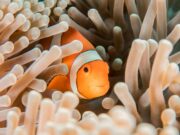“The surface is the skin through which our ocean breathes. It is a critical nursery ground for hundreds, possibly thousands, of species, and it is also one of the most vulnerable regions to human impacts. This is why we must treat the surface with exceptional care. It is an extremely unique and fragile environment, and small impacts at the surface could ripple into large impacts above and below the waves.” Dr. Rebecca Helm, Assistant Professor of Environmental Science at Georgetown University
The Ocean Cleanup’s (TOC) aim is to remove plastic from the ocean surface by collecting it with large nets. However, this approach results in the collection of surface marine life (neuston) as by-catch.

New research by Dr Rebecca Helm and others at Georgetown University shows that the impact of ocean surface plastic removal largely depends on neuston life histories (which are unknown), and range from potentially mild to severe.
“Even with the best available science and knowledge, we are not able to predict the scope of impacts, which could range from a modest decline in population numbers to a total collapse,” commented Dr Helm.
The work highlights how little we truly know about the high seas, and why research on high seas ecosystems is so important.
The high seas lie beyond national jurisdiction, covering nearly 50% of the Earth’s surface and constituting over 64% of the ocean by area. The ecological diversity of the high seas, and our reliance on it, is complex and poorly defined. This is especially true for the high sea ocean surface, which connects diverse ecosystems and regulates ocean atmosphere exchange.
In another study, the authors found that sea creatures were more abundant inside the North Pacific “Garbage Patch” than on the periphery. They had arrived there on the same currents as had brought the plastic waste. Three groups of floating sea creatures: sea rafts (Velella sp), the beautiful blue sea buttons (Porpita sp) and violet sea snails (Janthina sp) were especially abundant within the plastic patch rather than outside it.

The same ocean currents that concentrate plastic waste at oceanic gyres may be vital to the life cycles of floating marine organisms, by bringing them together to feed and mate, the researchers say. However, human activities could negatively impact these high sea meeting grounds and the wildlife that depends on them.
Dr Helm adds, “The ‘garbage patch’ is more than just a garbage patch. It is an ecosystem, not because of the plastic, but in spite of it.”
Further reading
Spencer et al (2023) Estimating the impact of new high seas activities on the environment: the effects of ocean-surface macroplastic removal on sea surface ecosystems. Aquatic Biology
Chong et al (2023) High concentrations of floating neustonic life in the plastic-rich North Pacific Garbage Patch. PLoS Biol 21(4): e3001646.
Main image credit: Denis Riek, The Global Ocean Surface Ecosystem Alliance (GO-SEA) Field Guide (CC-BY 4.0)

















